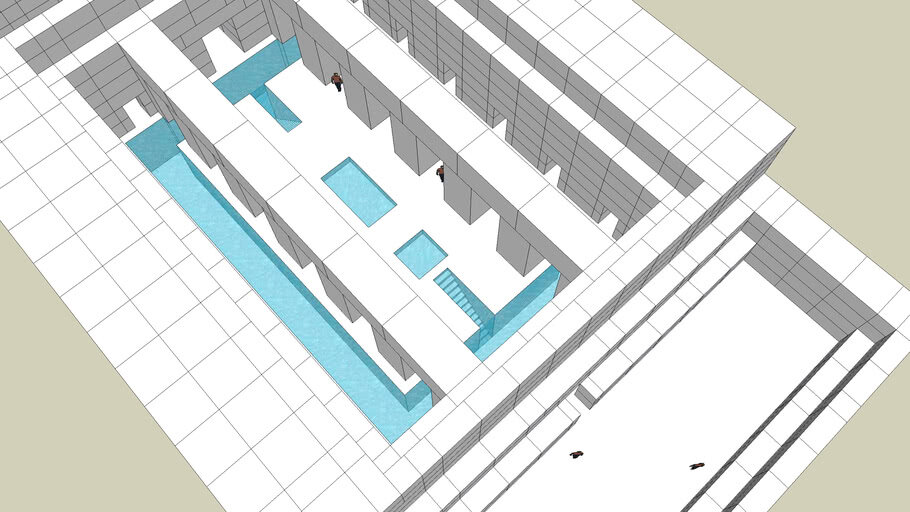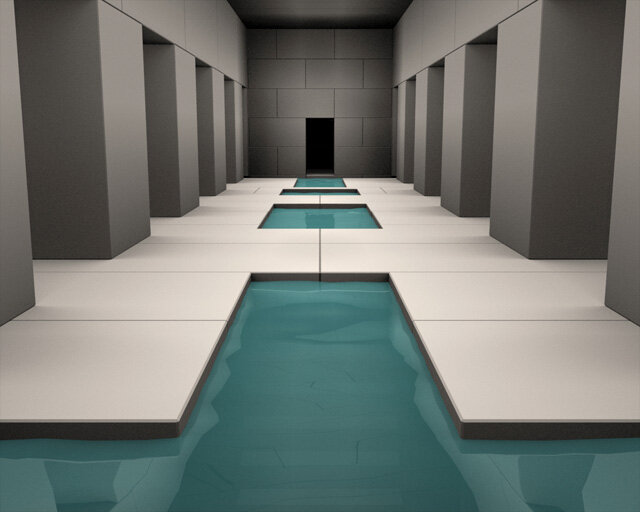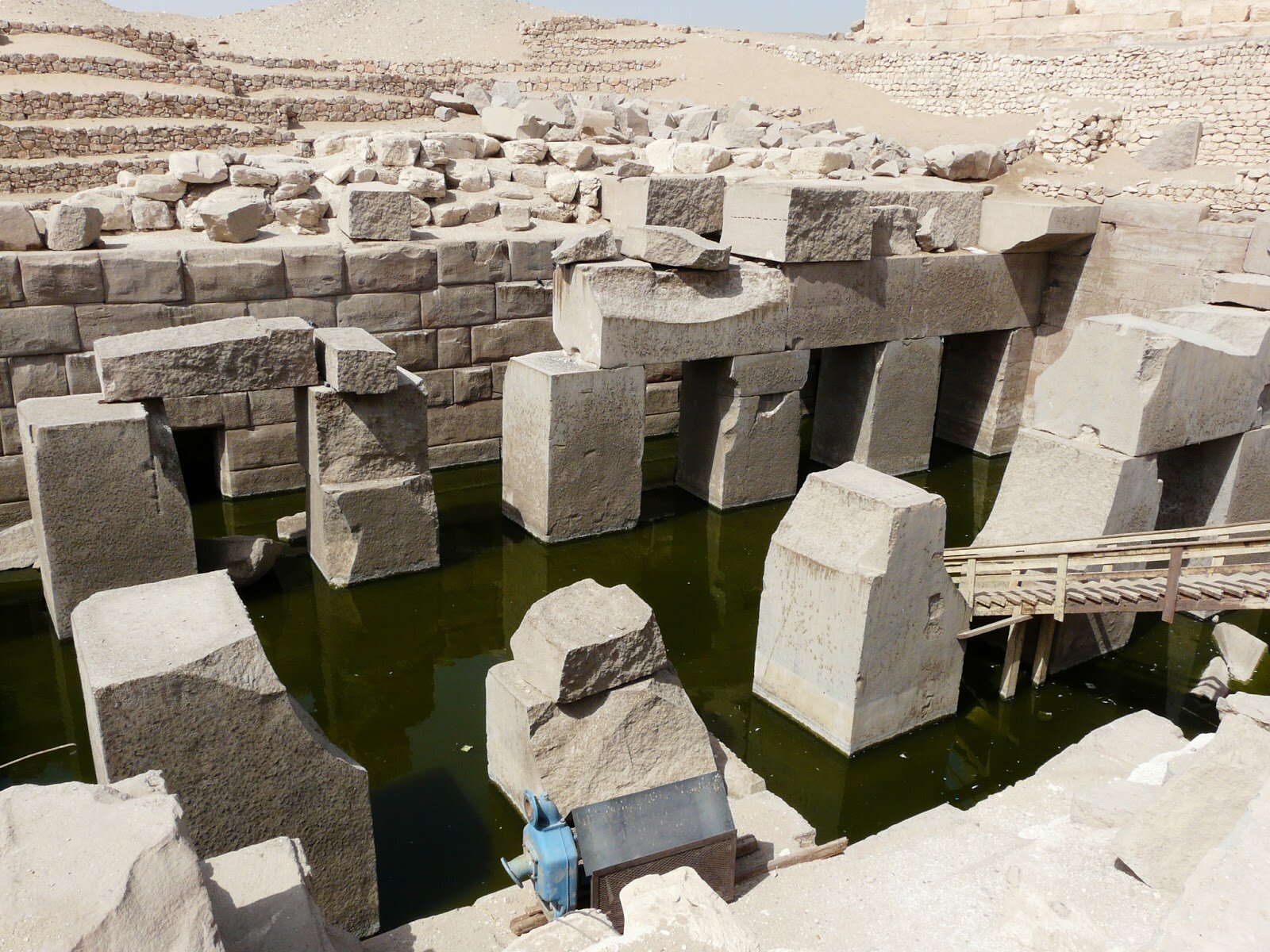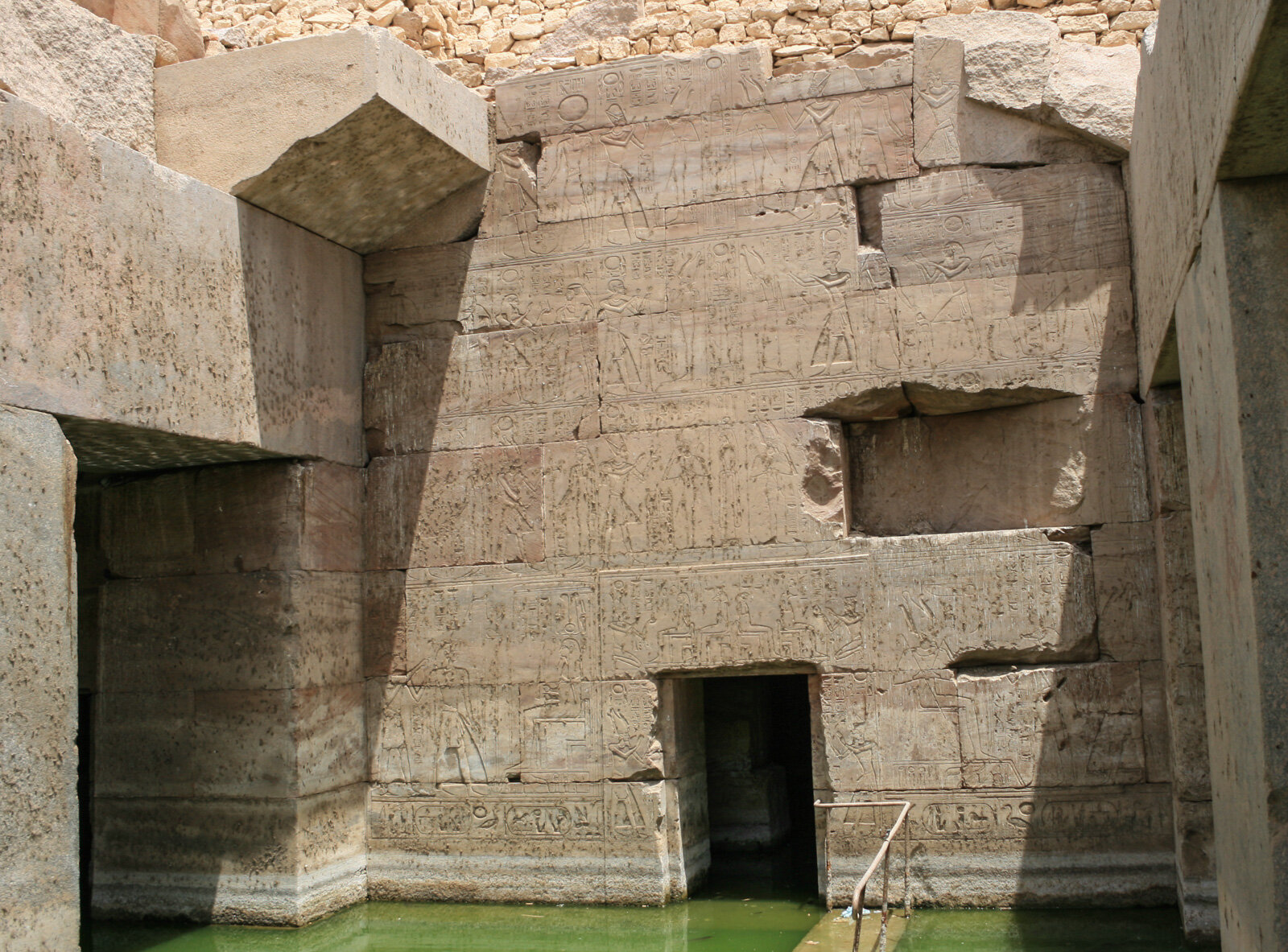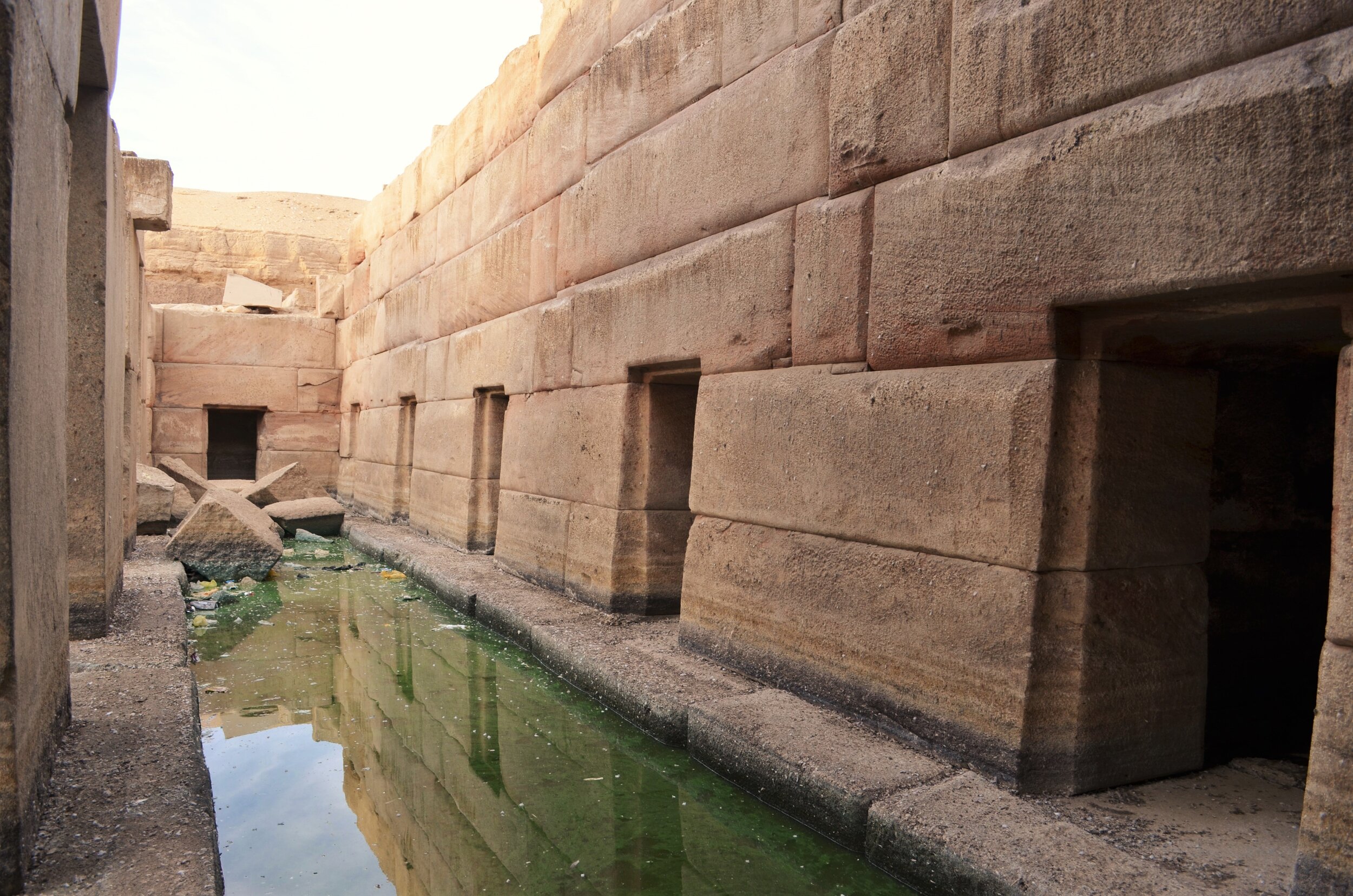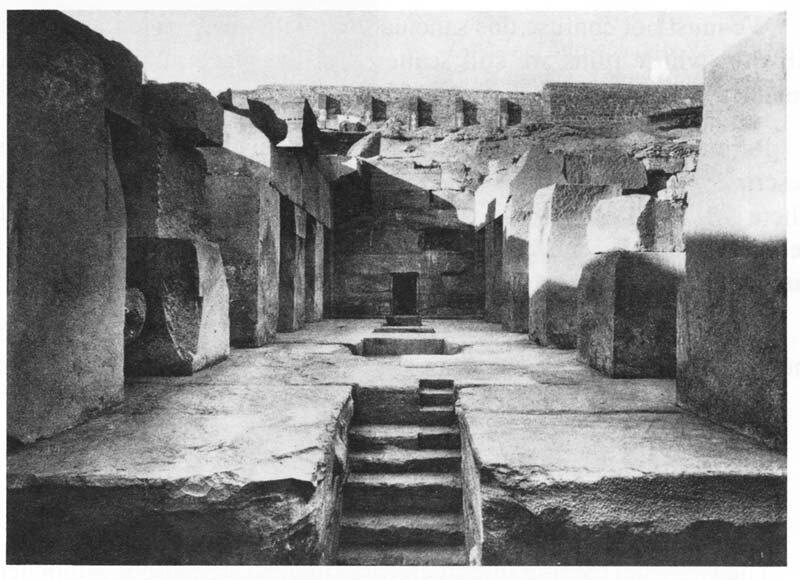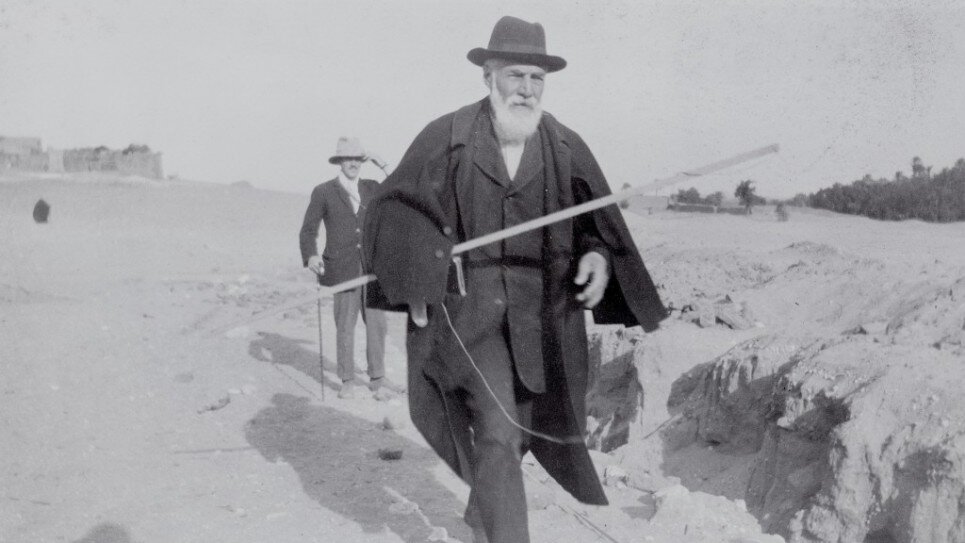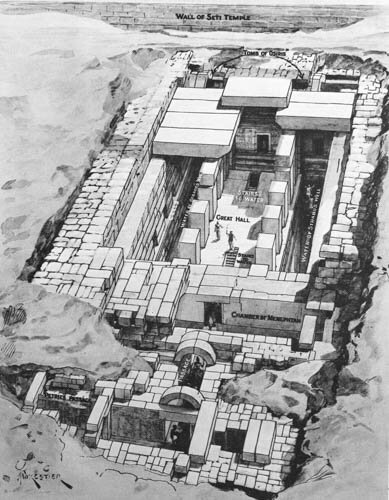The Osirion or Osireon is an ancient Egyptian temple. It is located at Abydos, to the rear of the Mortuary Temple of Seti I. The Osireion is a weird and wonderful structure, unique in Egypt and still baffling for Egyptologists. The entire structure is closed to visitors, making inspection of the funerary and ritual texts carved on its walls impossible, but you can look down on it from the rear of Seti's temple, from where there is a good overview of the cenotaph and its surrounding waters.
Originally thought to be an Old Kingdom construction, on account of the great blocks of granite, it has now been dated to Seti’s reign and is usually interpreted as a cenotaph to Osiris, or more specifically to Seti as Osiris. Its design is believed to be based on the rock-cut tombs in the Valley of the Kings. Reached by a 420-ft subterranean passage, the centre of its 10-columned ‘burial chamber’, which lies at a lower level than Seti’s temple, is a dummy sarcophagus. This chamber is surrounded by water channels to simulate an island.
Photo by Mohsen Sharawy
It was discovered by archaeologists Flinders Petrie and Margaret Murray, who were excavating the site in 1902–03. Sir William Matthew Flinders Petrie (3 June 1853 – 28 July 1942), was an English Egyptologist and a pioneer of systematic methodology in archaeology and preservation of artefacts. He held the first chair of Egyptology in the United Kingdom, and excavated many of the most important archaeological sites in Egypt in conjunction with his wife, Hilda Petrie. Some consider his most famous discovery to be that of the Merneptah Stele, an opinion with which Petrie himself concurred. Margaret Alice Murray (13 July 1863 – 13 November 1963) was an Anglo-Indian Egyptologist, archaeologist, anthropologist, historian, and folklorist. The first woman to be appointed as a lecturer in archaeology in the United Kingdom, she worked at University College London (UCL) from 1898 to 1935. In 1902–03 she took part in Petrie's excavations at Abydos, Egypt, there discovering the Osireion temple and the following season investigated the Saqqara cemetery
Petrie at Abydos.
Strabo, who visited the Osireion in the first century BC, said that it was constructed by Ismandes, or Mandes (Amenemhet III), the same builder as the Labyrinth at Hawara:
Above this city [Ptolemaïs] lies Abydus, where is the Memnonium, a royal building, which is a remarkable structure built of solid stone, and of the same workmanship as that which I ascribed to the Labyrinth, though not multiplex; and also a fountain which lies at a great depth, so that one descends to it down vaulted galleries made of monoliths of surprising size and workmanship.
There are some Flower of Life symbols painted on the inside of one of the monoliths. For those unfamiliar, the Flower of Life is one of the most important symbols of sacred geometry. Sacred geometry is a complicated topic beyond the scope of this Abydos temple guide. But the ancient Egyptians took it very seriously, and based much of their architecture and art on special proportions which they regarded as sacred.
Pythagoras was greatly inspired by the Egyptians and spent time studying there. While we don’t know exactly when the Flower of Life was painted at Abydos, Greek text can be spotted nearby, indicating sometime during the Ptolemaic era.
The Osireion consists of large square rose granite pillars, most of which are completely void of any carvings or inscriptions. Some of the pillars are as heavy as 100 tons and had to be transported all the way from Aswan.
Despite the major stylistic differences between the Osireion and other New Kingdom monuments, many Egyptologist give Merenptah all the credit. The reason why it was built at such a low level is stil a mystery. Many suggest that Seti I chose this particular spot of Abydos for his temple because the Osireion was already there. The Egyptians, all throughout their history, regularly renovated older monuments while adding new artwork.
